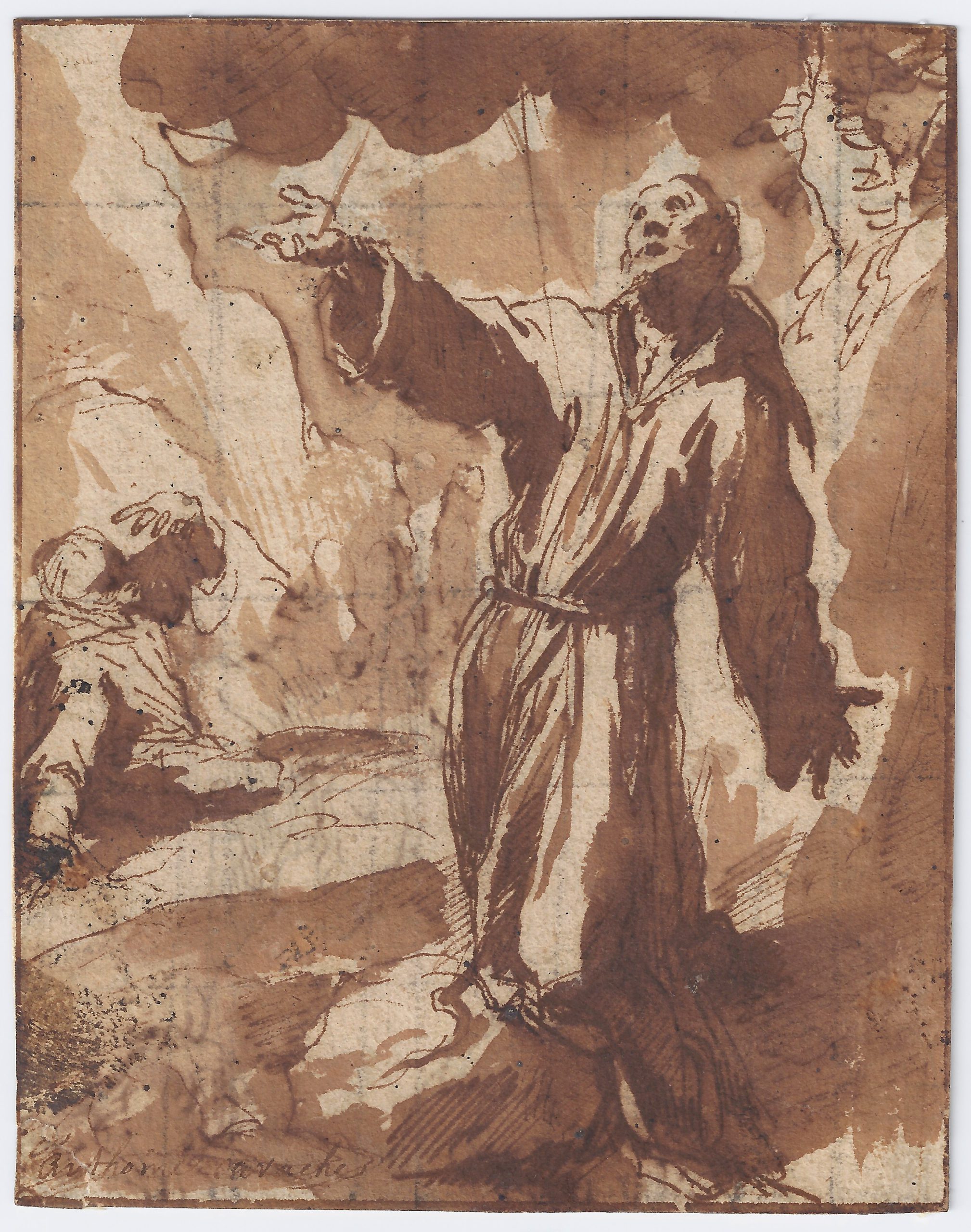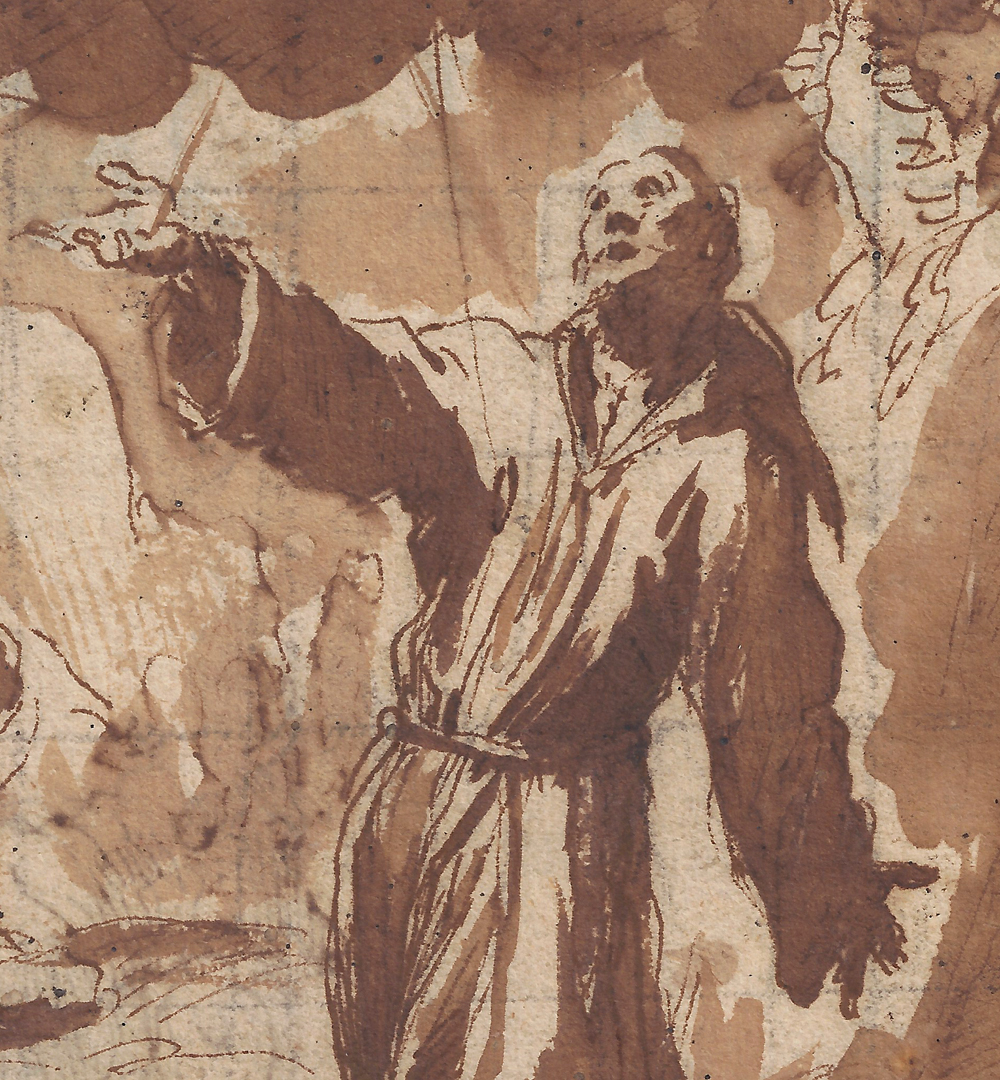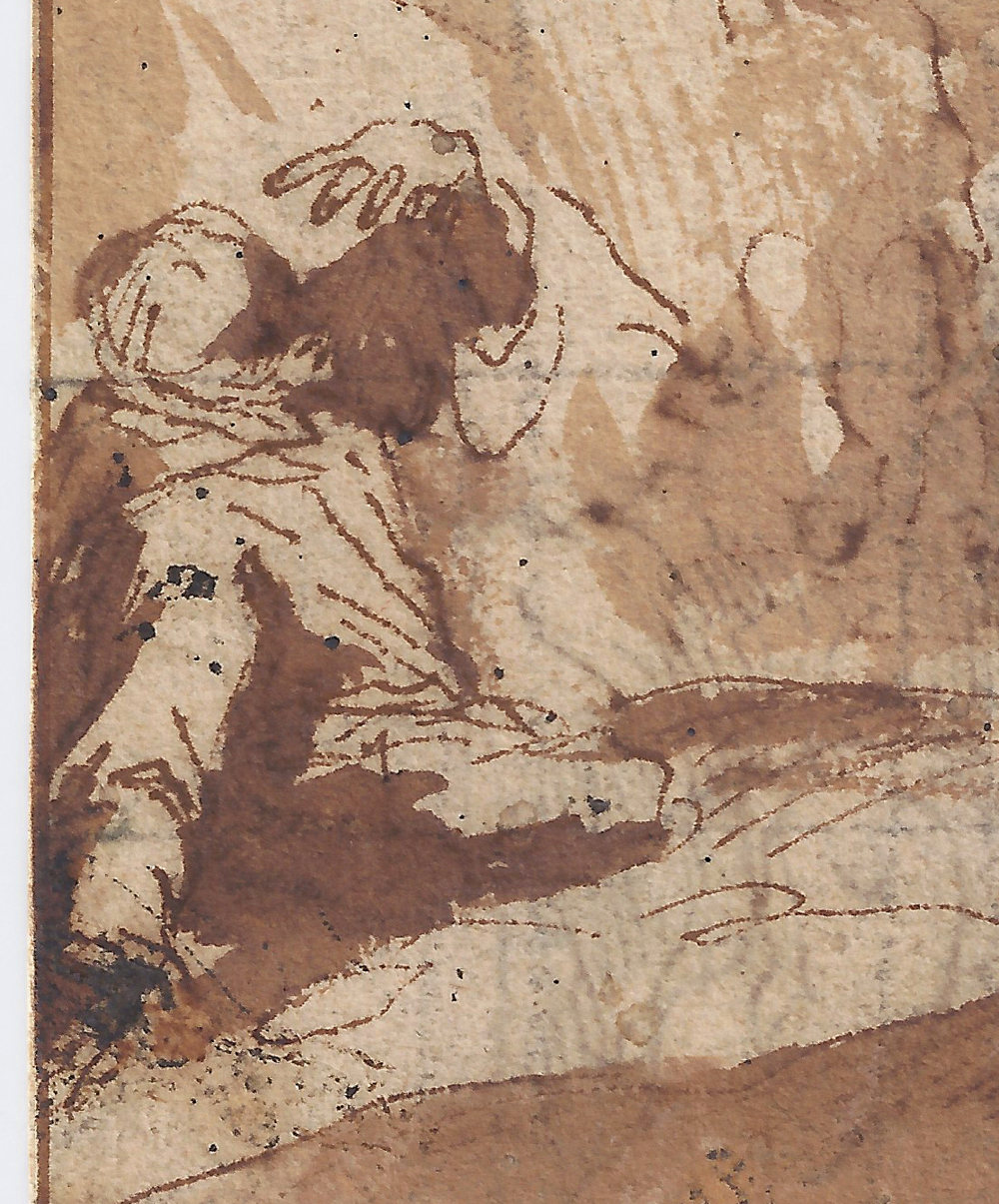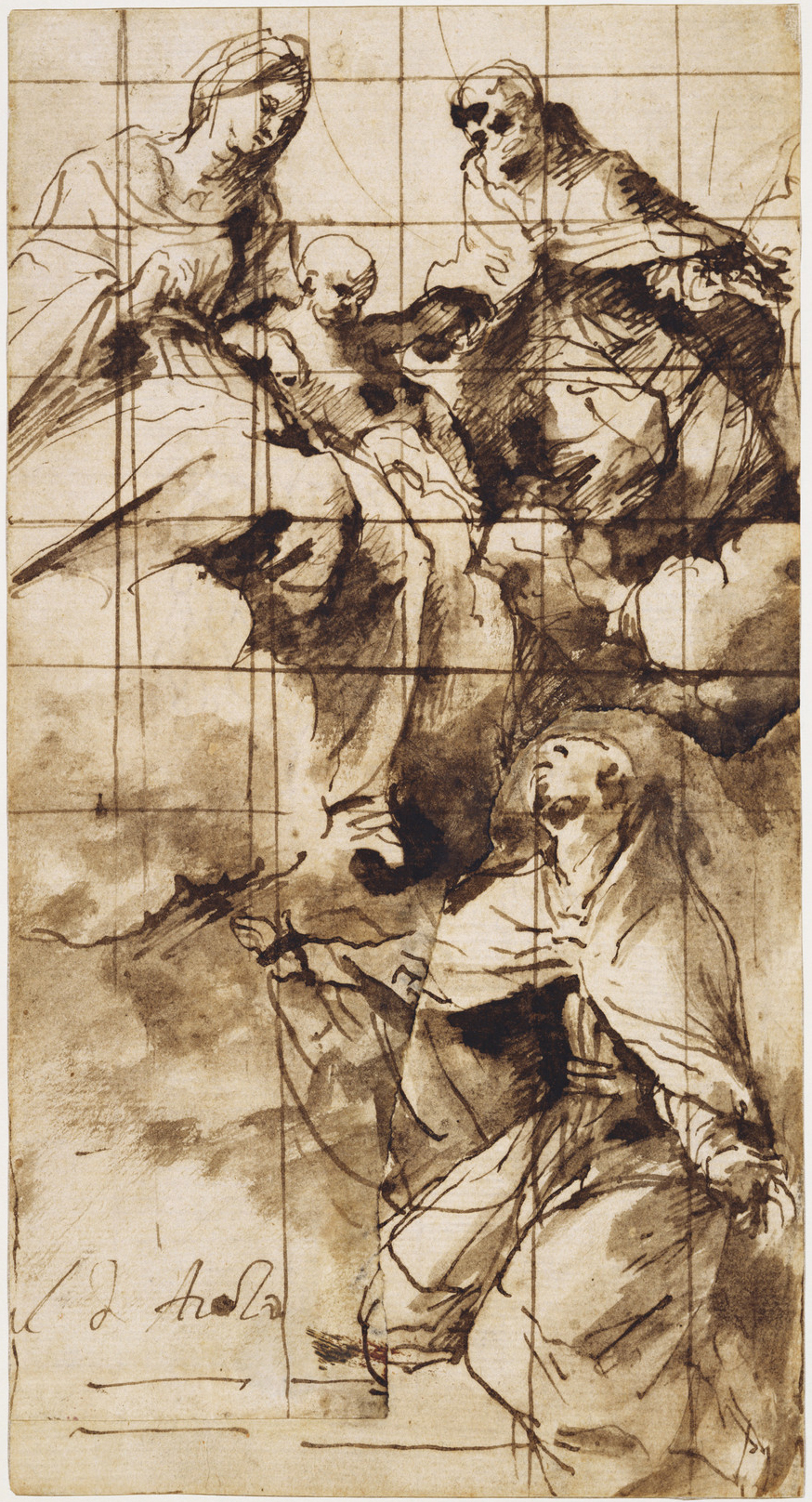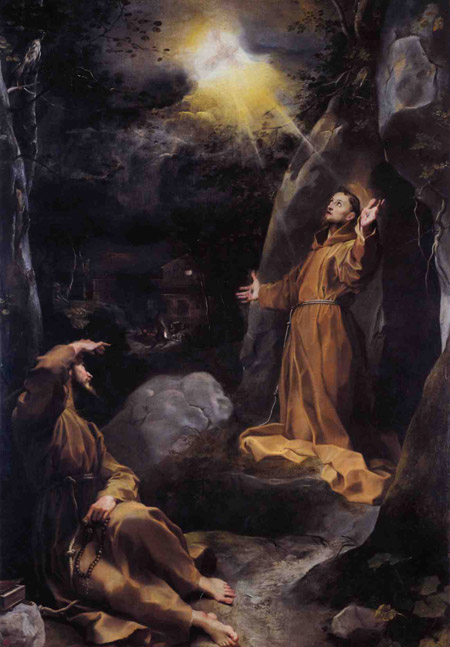Attributed to GIOVANNI LANFRANCO (Parma 1582 – 1647 Rome)
Attributed to Giovanni Lanfranco (Parma 1582 – 1647 Rome)
The Stigmatisation of St Francis of Assisi
Pen and brown ink, brown wash, squared in black chalk, 133 x 104 mm (5.2 x 4.1 inch)
Inscribed at lower left: ‘Antoine Carache’ (pen and brown ink in an 18th-century hand)
Provenance
Private collection, England
***
Giovanni Lanfranco was an early exponent of the Baroque style in Rome.1 In Parma, Lanfranco studied under Agostino Carracci and was influenced by Correggio's dome frescoes. In 1617 Lanfranco's frescoes in the Sala Regia in the papal Palazzo del Quirinale won him admiration as one of Rome's most progressive painters. In the mid-1620s he introduced an approach to space dominated by diagonals that derived partly from the art of Tintoretto. Lanfranco contrasted monumental foreground figures with partly hidden figures emerging from behind a rise – an effect which can also been seen in the present drawing. The resulting tension differed from the approach taken by Annibale Carracci, Domenichino, and Pietro da Cortona, whose compositions were organised in layers parallel to the picture plane.
Lanfranco's dome of San Andrea della Valle in Rome heralded the High Baroque by combining the Carracci figure style with Correggio's illusionistic foreshortening. Domenichino, who lost this commission, is said to have weakened part of the scaffolding, hoping his rival would break his neck. From 1634 to 1646, Lanfranco worked in Naples, asserting himself against hostile local painters to finish the Cappella del Tesoro's cupola in Naples Cathedral. He returned to Rome in 1646.
It was Lanfranco’s practice to carefully work out compositions for his paintings in numerous drawings first – a working method he was taught by Carracci. As was regularly the case with Lanfranco’s drawings, in the eighteenth century our drawing was attributed to Carracci, according to the inscpription by an early collector. Groups of Lanfranco’s drawings are preserved in the Musum Kunstpalast, Düsseldorf, in the Royal Collection at Windsor Castle, in the Uffizi, Florence, and the Louvre, Paris.2
Our powerful drawing of The Stigmatisation of St Francis, with its strong chiaroscuro effects, is a particularly painterly sheet – the washes applied by the draftsman strongly contribute to the dramatic effect. The black chalk squaring suggests the design was intended to be transferred to larger size, presumably for a painting, although a finished work of this composition has not been identified. The handling of our sheet is comparable for instance to Lanfranco’s Virgin and Child Accompanied by a Saint Appearing to a Monk in the Royal Collection at Windsor Castle (fig.).3 Nicholas Turner has observed that the composition shows an awareness of Federico Barrocci’s famous painting of the subject, executed c.1594-95 and now in the Palazzo Ducale, Urbino (fig.). I am very grateful to Nicholas Turner for his valuable comments on this drawing.
SOLD
1. For the artist, see E. Schleier, Giovanni Lanfranco: un pittore barocco tra Parma, Roma e Napoli, Napels 2001 and E. Schleier, Dello stile naturale: die Zeichnungen des Giovanni Lanfranco Museum Kunst Palast, Düsseldorf 2006.
2. The Louvre drawings were recently discussed in: C. Loisel, Inventaire général des dessins italiens, tome X, dessins bolonais du XVIIe siècle, Paris 2013, cat. nos. 340 -376, pp. 241-263.
3. Pen and brown ink and brown wash, 237 x 126 mm; dated c. 1634-46; inv. no. RL 5668. The sheet is a study for a painting in the apse of the church of SS. Apostoli, Naples.
